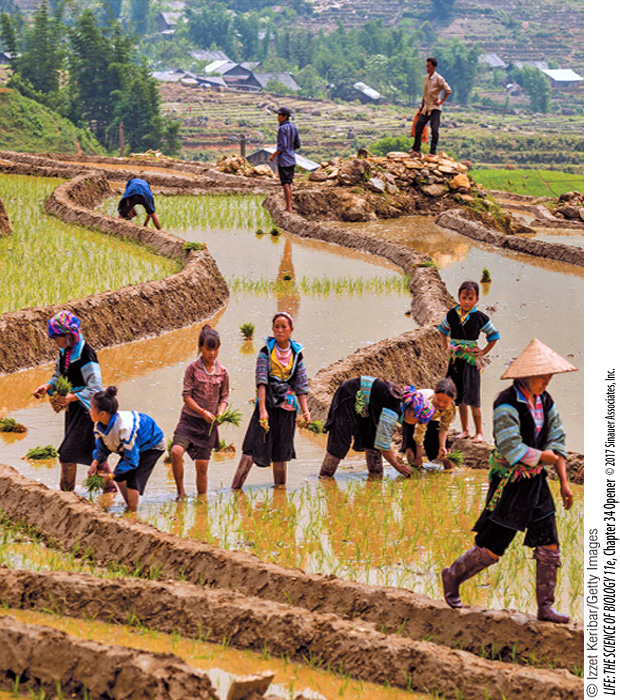investigating life
Plants need a lot of water to grow. Crop plant cultivation consumes far more water than all other human activities combined. Meeting the demand is especially challenging in drought-prone regions, compelling us to understand how plants use water so that we can select or breed plants that use it more efficiently. Much of the mass that plants acquire as they grow is due to their net fixation of atmospheric CO2 into carbohydrates through photosynthesis. The ratio of net photosynthetic carbon fixation into plant material to water uptake is known as a plant’s water-use efficiency.
One of the least water-efficient of all crop plants is, unfortunately, one of our most important: rice. Rice plants use up to three times more water per unit of growth than crops such as wheat and corn. The precariousness of heavily water-dependent rice farming was dramatically demonstrated in eastern India between 1997 and 2003, when drought reduced rice production by more than 5 million tons—some farmers lost up to 50 percent of their crops.
A strain of rice requiring less water yet producing the same amount of grain would both make the world supply of rice less vulnerable to drought and help conserve water for other uses. A team of scientists began the quest for such a strain by studying the model organism Arabidopsis thaliana. They searched for mutations of Arabidopsis that had superior water-use efficiency. One genetic variant they studied has an extensive root system (indicating higher capacity for water uptake) and thick leaves with abundant photosynthetic tissue (indicating prolific photosynthesis). Molecular and physiological characterization linked the improved water usage of this Arabidopsis strain to a mutation in a single gene that codes for a transcription factor that the scientists called HARDY. This protein turns out to be a member of a family of transcription factors that plants use to regulate genes in response to biotic and abiotic stress. When biotechnologists isolated this gene (HARDY) and put it into rice plants, the transformed rice plants not only had higher water-use efficiency than wild-type rice plants but were more tolerant of dry soil as well.
Laboratories around the world are using Arabidopsis to isolate genes involved in water usage and other important physiological processes. The knowledge gained from these studies may lead to various improvements of crop plants.
What methods are used to reduce water loss in agriculture?
